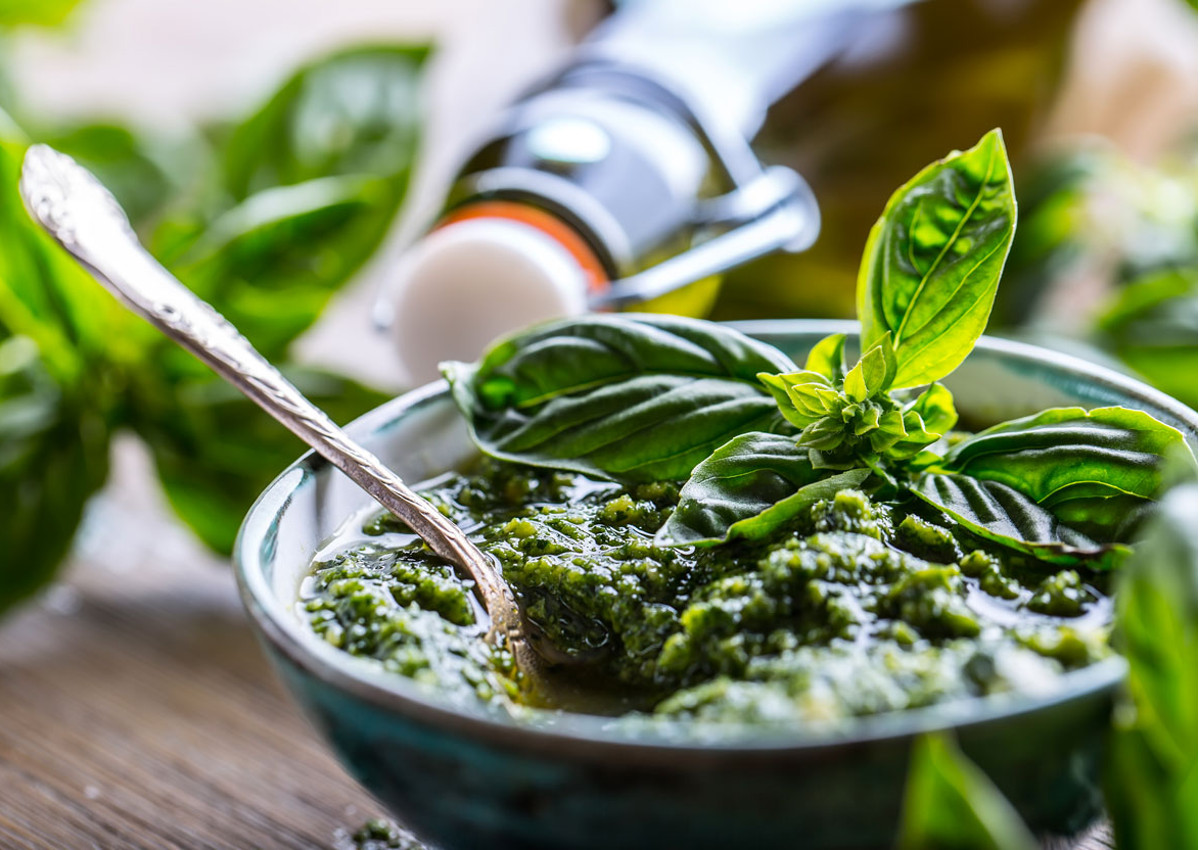
Italian pesto producers think positive and expect good news from Summer 2020. In fact the return to holidays in Italy should give a boost to ‘seasonal’ shops, that is to say, the points of sale that last year recorded the greatest increase in sales of this typical Italian sauce (+5.9%, source: Nielsen), which reached almost 9 million euros in this distribution channel only.
Click here to find the authentic Italian pesto on Italianfood.net platform
This is maybe too little for a market that is worth 210 million euros considering the entire Italian large-scale retail trade, but, however, the trend is a sign of the good situation that pesto is undergoing in the consumer market in Italy.
NOT ONLY BASIL: SALES OF OTHER KINDS OF PESTO INCREASE TOO
According to the Italian newspaper Il Sole 24 Ore, Italians are putting more and more packs of pesto in their shopping cart (+5% per year) and spend more and more to buy it. Both because the average prices continue to rise (now it’s over 11 euros per kg) and because they prefer the high-end variants.
But what Italians love above all are the most unusual and particular versions of pesto and they buy, literally, it in all possible colour. If the traditional green pesto, made with basil and inspired by the Genoese tradition, continues to dominate the market in recent years, many different taste variants are flourishing. Customers can find red and white pestos, as well as pestos made with dried fruit (such as nuts or pistachios) or vegetables (such as broccoli, radicchio or artichokes), gourmet pestos and those with a specific regional flavour. The ‘other pestos’ segment is, after all, the most dynamic one. It is recording an annual growth of over 6%, and also the segment where all new product launches have been concentrated.
“Innovation has been decisive for the growth of this market” – confirms Francesca D’Imperio, marketing manager of the Italian preserves company Star. “The launch of more particular recipes characterized by combinations of unexpected ingredients has created a variety of proposals that are highly appreciated by consumers. And it has increased both the sell-out and the user base. Over the past four years our ‘Tigullio’ brand has doubled turnover and penetration. It is the protagonist of a major project focused on Genoese pesto, which we will launch in 2021.”
THE PLAYERS IN AN INCREASINGLY CROWDED MARKETPLACE
Behind the extension of the offer and the entry of new brand competitors (such as Cuore and Mutti) there is a precise strategy: to offer a varied range and to ‘separate’ pesto from pasta, to extend its use also asa dressing, seasoning, topping or filling for bruschettas, pizzas, sandwiches etc. Just like what happens abroad, where pesto is ‘venerated’ as a totemic product of Italian cuisine but it is also used in ways that are anything but classic, from pizza topping to hamburger stuffing.
This ‘secondary usage’ seems to be the key to making it appreciated and consumed on all continents, making it an excellent exports product. There are case histories such as the one of Saclà, which exports Italian pesto to over 60 countries, or the Ligurian company Clas, world leader in private-brand pesto. It produces 56 million jars a year and 90% of its 36 million annual turnover comes from exports. The downside of this popularity is the growing Italian sounding phenomenon, made of products that have nothing to do with the original recipe (fresh basil and no additive).
Italians, on the other hand, pay a lot of attention to these aspects, so much so that they have pushed many producers to reformulate their recipes, starting with the leading company Barilla. Consumers prefer pesto that is made with selected raw materials, of Italian certified origin, and with simple recipes that are free of ingredients such as salt, preservatives, and gluten. For the same reasons in recent years garlic-free pesto has overtaken classic pesto, becoming the most loved by Italians.
